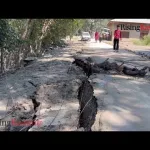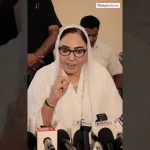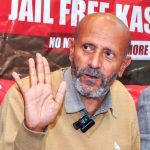Having been exiled from my native homeland-the Kashmir Valley,where I was successfully practising Law in the high court -I am uninterruptedly practising Law in Supreme Court of India.I am a proud member of Supreme Court Bar Association (SCBA) and have been elected as a Senior Member of its executive committee for three terms.
It is a matter of pride for me to practise law in the temple of Justice.The Supreme Court of India is reputed as an independent institution of legal excellence as the honourable Judges carry vast legal and judicial experiences.The Judges and the Chief Justice who is first amongst them are the fine legal minds with intellectual fervour.The members of the bar are certainly the persons of great learning with sharp intellect and finest advocacy skills and deep commitment to constitutionalism. The Supreme Court today celebrated its diamond jubilee.
The history of this great institution is:The Supreme Court of India was inaugurated in the Parliament building,, on January 28, 1950. as no Supreme Court building existed then.
The Supreme Court of India (Bhārat Kā Uchchatam Nyāyālaya) is the supreme judicial authority and the highest court of the Republic of India. It is the final court of appeal for all civil and criminal cases in India. It has the power of judicial review. The Supreme Court, which consists of the Chief Justice of India and a maximum of fellow 33 judges, has extensive powers in the form of original, appellate and advisory jurisdictions.
The Supreme Court of India came into existence on 28 January 1950.It replaced both the Federal Court of India and the Judicial Committee of the Privy Council, which were then at the apex of the Indian court system. The first proceedings and inauguration, however, took place on 28 January 1950 at 9:45 am, when the judges took their seats; which is thus regarded as the official date of establishment.
The Supreme Court initially had its seat at the Chamber of Princes in the parliament building where the previous Federal Court of India sat from 1937 to 1950. The first Chief Justice of India was H. J. Kania. In 1958, the Supreme Court moved to its present premises.Originally, the Constitution of India envisaged a supreme court with a chief justice and seven judges; leaving it to Parliament to increase this number. In its formative years, the Supreme Court met from 10 to 12 in the morning and then from 2 to 4 in the afternoon for 28 days per month.
The emblem of the Supreme Court represents the Lion capital of Ashoka at Sarnath, with a topmost wheel featuring 32 spokes.
As the apex constitutional court, it takes up appeals primarily against verdicts of the High Courts of various states and tribunals. As an advisory court, it hears matters which are referred by the President of India. Under judicial review, the court invalidates both normal laws as well as constitutional amendments that violate the Basic structure doctrine. It is required to safeguard the fundamental rights of citizens and settles legal disputes among the central government and various state governments.
Its decisions are binding on other Indian courts as well as the union and state governments.As per the Article 142 of the Constitution, the court is conferred with the inherent jurisdiction to pass any order deemed necessary in the interest of complete justice which becomes binding on all the authorities to enforce.
The Supreme Court replaced the Judicial Committee of the Privy Council as the highest court of appeal since 28 January 1950, two days after India was declared a republic.
Empowered by the Indian Constitution with expansive authority to initiate actions and wield appellate jurisdiction over all courts within the nation along with the pivotal ability to review constitutional amendments, underscoring its significant role in the legal landscape of the country, the Supreme Court of India is widely acknowledged as one of the most powerful supreme courts in the world.
In 1861, the Indian High Courts Act 1861 was enacted to create high courts for various provinces and abolish Supreme Courts at Calcutta, Madras and Bombay and also the sadar adalats in presidency towns in their respective regions. These new high courts had the distinction of being the highest courts for all cases till the creation of the Federal Court of India under the Government of India Act 1935. The Federal Court had the jurisdiction to solve disputes between provinces and federal states and hear appeals against judgement of the high courts. The first CJI of India was H. J. Kania.
The original Constitution of 1950 had a Chief Justice of India and seven puisne judges and had left it to Parliament to increase the number.
Subsequently, the Parliament has increased the number of judges six times since 1950 to the current strength of 34 in 2019.
During Covid-19 pandemic shutdown the Supreme Court played its constitutional functions to impart justice to the needy. The role of judicial review provided relief during COVID – 19 in the Education Sector, pinpointing various judgments of various high courts and the Supreme Court and its actual implementation on the ground level, including the problem faced by students, teachers, and educational institutions during the lockdown and way forward.
In 2023, the Supreme Court saw several technological changes, ranging from litigant-friendly facilities, with the Hybrid hearing system being one of the key achievements for listing of cases. Even mentioning of cases has been streamlined, along with smart and paperless courts.
The Supreme Court’s use of Artificial Intelligence (AI) for transcription was recognised in UNESCO’s “Global Toolkit on Al and the Rule of Law for the Judiciary”
This year will see further technological changes. Among them will be the establishment of an independent data centre that leverages both public and private cloud services; cutting-edge live-streaming solutions, a tenfold boost in internet speed, and a new Supreme Court website that offers both English and Hindi option, in recognition of the needs of a diverse audience.





